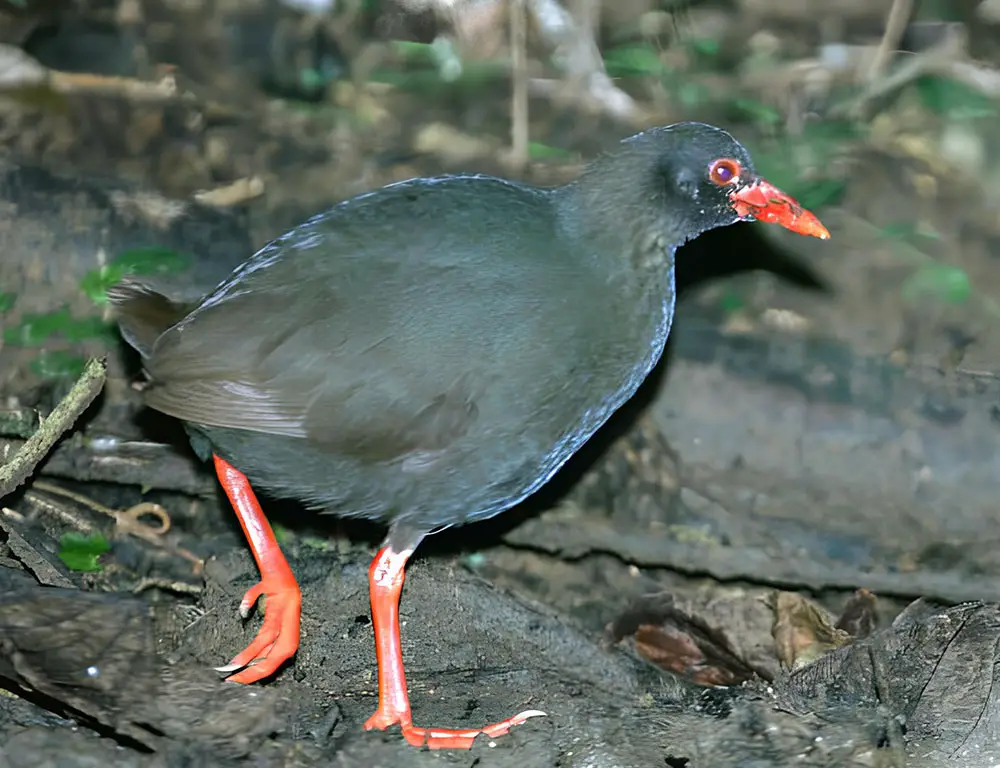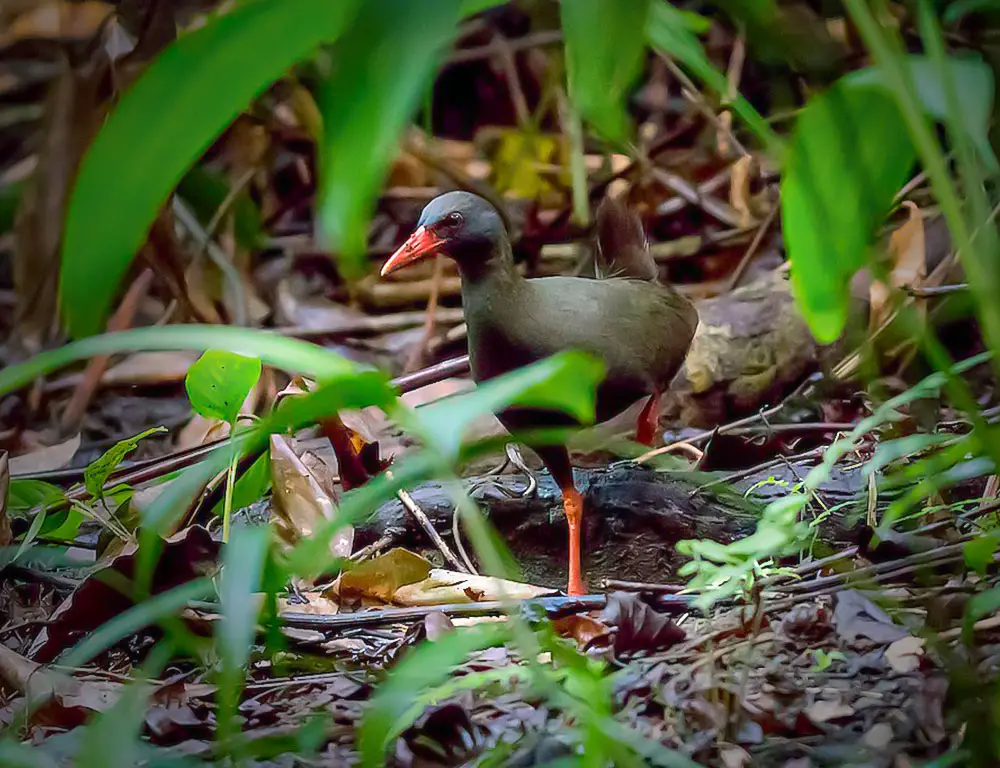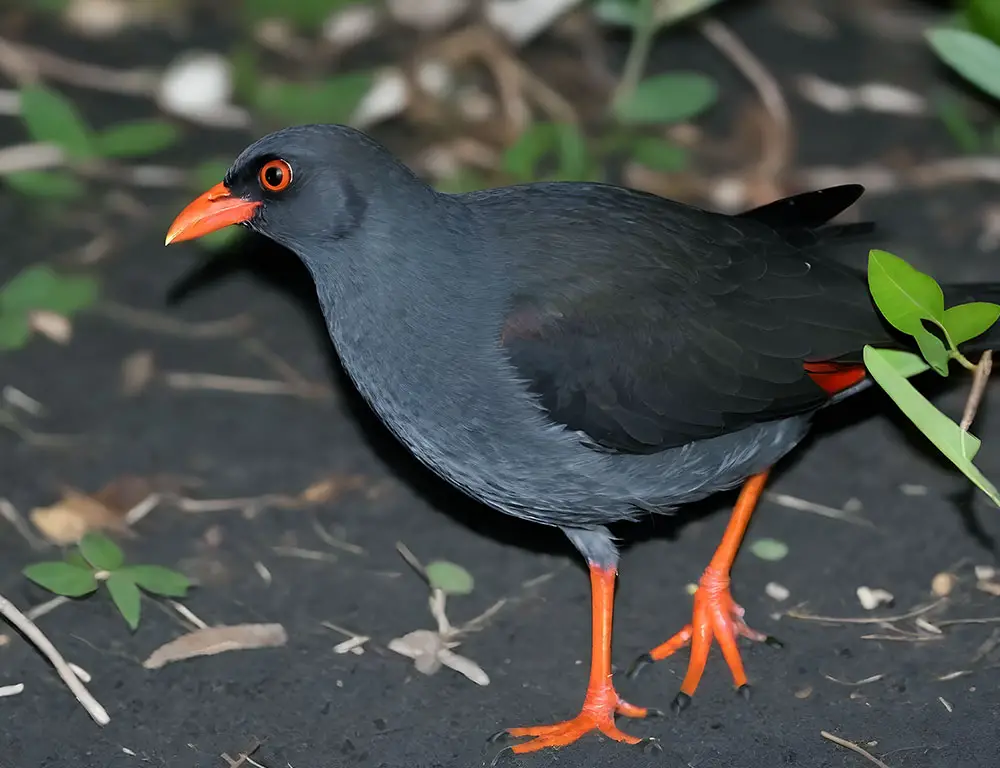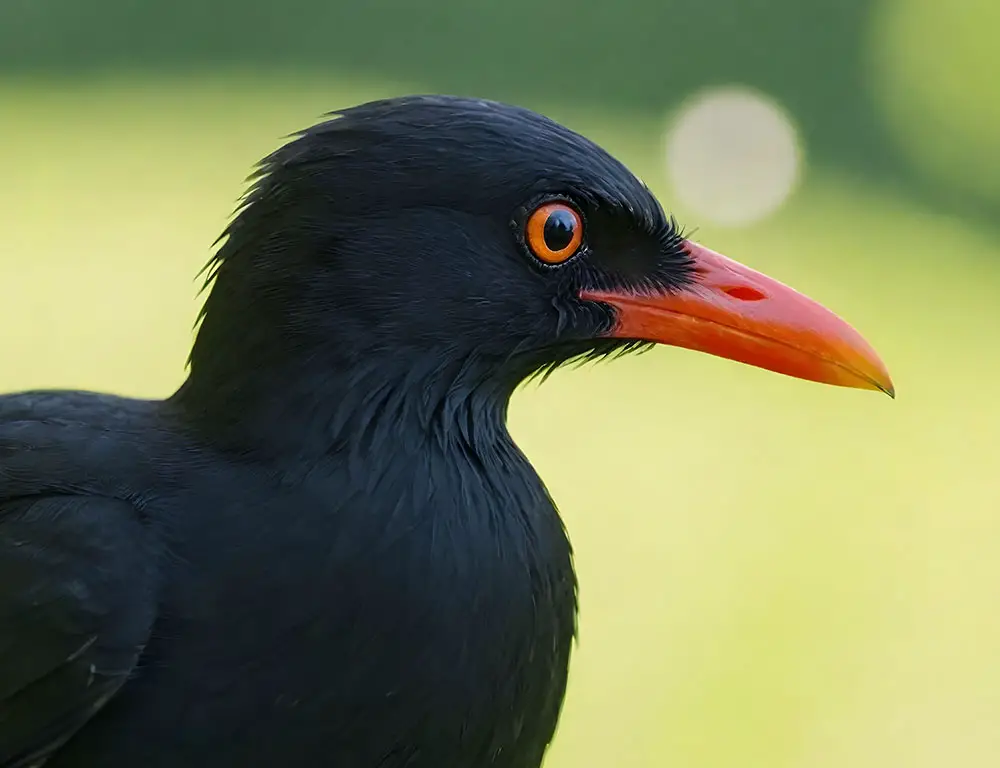Nestled within the lush landscapes of the Philippines lies a hidden treasure – the elusive Calayan Rail, scientifically known as Gallirallus calayanensis.
Discovered just over two decades ago on Calayan Island in the Babuyan Islands, this mysterious bird species has captivated the imaginations of ornithologists and nature enthusiasts alike.
Its isolated habitat offers a rare glimpse into untouched wilderness, inviting exploration and discovery.
As we embark on a journey to unravel the secrets of the Calayan Rail, we also embark on a broader exploration of the intricate tapestry of biodiversity that adorns our planet.
Join me in unveiling the enigmatic existence of this captivating bird, and let us deepen our appreciation for the wonders of Mother Nature’s bounty.

Physical Characteristics of Calayan Rail
The Calayan Rail (Gallirallus calayanensis) possesses several distinctive physical characteristics that enable it to thrive in its habitat on Calayan Island in the Philippines.
Here are the key physical traits of the Calayan Rail:
Size
The Calayan Rail is a relatively small bird, measuring approximately 25 to 30 centimeters (10 to 12 inches) in length from beak to tail.
Plumage
Its plumage is primarily deep brown, with darker streaks and speckles across its body. These markings provide camouflage in the dense vegetation of its forest habitat. The plumage may appear slightly iridescent in certain lighting conditions.
White Spots
One of the most prominent features of the Calayan Rail’s plumage is the presence of white spots scattered across its feathers. These spots add to its intricate appearance and aid in camouflage.
Beak
The Calayan Rail has a relatively long and slender beak, typically red. The beak is slightly curved and pointed, adapted for probing and foraging for food on the forest floor.
Legs and Feet
Like its beak, the legs and feet of the Calayan Rail are also red. Its legs are relatively long and sturdy, allowing it to navigate through the dense undergrowth of its habitat easily.
The feet are equipped with sharp claws, which assist in grasping onto branches and other surfaces.
Eyes
Calayan Rails have dark-colored eyes, which provide a keen vision for detecting prey and navigating their environment. Their eyesight is vital for foraging and avoiding predators in the dimly lit forest understory.
Tail
The Calayan Rail’s tail is relatively short and rounded, adding to its streamlined appearance. While not as conspicuous as some of its other features, the tail aids in balance and maneuverability while moving through its habitat.
Habitat and Distribution of Calayan Rail

The Calayan Rail (Gallirallus calayanensis) is endemic to Calayan Island, part of the Babuyan Islands archipelago in the northern Philippines. This bird species has a highly restricted distribution on Calayan Island.
Habitat
The Calayan Rail inhabits various habitats on Calayan Island, primarily favoring dense forests and secondary growth areas. These habitats include:
- Primary Forests: Calayan Rails can be found in undisturbed primary forests, where the vegetation is dense and the canopy provides ample cover. These forests are rich in biodiversity and provide suitable habitats foraging and nesting.
- Secondary Growth Areas: Besides primary forests, Calayan Rails also inhabit secondary growth areas, which have regrown after being disturbed by human activity or natural events. These areas may have a less dense canopy but still provide suitable habitat for the rails.
- Understory and Bamboo Thickets: Calayan Rails prefer the understory layer within forested habitats, where the vegetation is dense and provides cover from predators. They also frequent bamboo thickets, which offer additional protection and food resources.
Distribution
The Calayan Rail is found exclusively on Calayan Island, located in the Babuyan Islands group in the northern Philippines. The Babuyan Islands are situated between the larger islands of Luzon and Taiwan.
Within Calayan Island, Calayan Rails are distributed across various forested areas, including lowland and upland regions.
Behavior and Diet of Calayan Rail

The behavior and diet of the Calayan Rail (Gallirallus calayanensis) are fascinating aspects of its ecology, offering insights into its adaptations to its unique habitat on Calayan Island in the Philippines.
Feeding Habits
Calayan Rails are omnivorous birds with a varied diet. Their feeding habits include:
- Invertebrates: A significant portion of the Calayan Rail’s diet consists of invertebrates such as insects, earthworms, spiders, and beetles. They forage on the forest floor, using their beaks to probe and pick up food from leaf litter and soft ground.
- Fruits and Seeds: While invertebrates form the bulk of their diet, Calayan Rails also opportunistically consume fallen fruits and seeds. This dietary flexibility allows them to utilize diverse food resources within their habitat.
- Snails: Snails are a favorite food item for Calayan Rails, especially during the rainy season when snails are abundant. They use their beaks to extract snails from their shells, demonstrating specialized feeding behaviors.
Feeding Behavior
Calayan Rails exhibit unique feeding behaviors adapted to their forest habitat:
- Foraging on the Forest Floor: These ground-dwelling birds spend much time feeding on the forest floor, searching for prey among leaf litter, fallen branches, and vegetation. They use their long legs and slender beaks to maneuver through the dense understory vegetation.
- Probing and Pecking: Calayan Rails use their beaks like pliers, probing and pecking at the ground to uncover hidden invertebrates. Their sharp beaks allow them to capture prey such as insects and worms efficiently.
- Opportunistic Feeding: Calayan Rails are opportunistic feeders, meaning they exploit a wide range of food resources based on availability. They adjust their feeding behavior seasonally, taking advantage of fluctuations in food abundance.
Breeding Behavior
Breeding season for Calayan Rails typically occurs between March and July. During this time, pairs become monogamous, and the male engages in courtship displays to attract a mate. Breeding behaviors include:
- Courtship Displays: To attract a female mate, the male Calayan Rail may perform courtship displays, such as fluffing up its feathers and emitting low purring sounds.
- Nesting: Calayan Rails build their nests on the ground, typically beneath dense vegetation or among rocks, to protect from predators. The nests are simple structures of leaves, twigs, and other plant materials.
- Incubation and Parental Care: After laying eggs, the female Calayan Rail incubates them while the male assists in nest defense and foraging. Both parents participate in caring for the hatchlings until they are ready to fledge.
Conservation Status of Calayan Rail

The Calayan Rail (Gallirallus calayanensis) is Endangered on the IUCN Red List due to its highly restricted range and declining population. The species faces several threats primarily associated with habitat loss, degradation, and predation by invasive species.
However, conservation efforts have been initiated to mitigate these threats and protect the remaining populations of this unique bird species.
Threats
- Habitat Loss and Degradation: The primary threat to the Calayan Rail is habitat loss and degradation due to human activities such as logging, agriculture, and infrastructure development. Deforestation and habitat fragmentation reduce the availability of suitable habitat for the species, leading to population declines.
- Predation by Invasive Species: Introducing invasive predators such as rats and feral cats poses a significant threat to Calayan Rails and their nests. These invasive species prey on eggs, chicks, and adult birds, reducing reproductive success and population viability.
- Natural Disasters: Calayan Island is susceptible to natural disasters such as typhoons, which can cause widespread habitat destruction and mortality among Calayan Rails. Extreme weather events exacerbate the species’ vulnerability and pose additional challenges to its conservation.
Conservation Efforts
- Protected Areas Establishment: The Philippine government has taken steps to protect the habitat of the Calayan Rail by establishing protected areas within Calayan Island. These protected areas aim to safeguard critical habitats and minimize human disturbance.
- Research and Monitoring: Conservation organizations and research institutions conduct regular monitoring programs to assess the population status, habitat requirements, and threats facing the Calayan Rail. Research findings inform conservation strategies and management decisions.
- Community Engagement and Education: Community engagement and education initiatives raise awareness among local communities, stakeholders, and policymakers about the importance of conserving the Calayan Rail and its habitat. These efforts foster community support and participation in conservation activities.
- Invasive Species Management: Conservation efforts include implementing invasive species management strategies to control and eradicate invasive predators such as rats and feral cats. These measures aim to reduce predation pressure on Calayan Rails and enhance their reproductive success.
- Legislative Protection: Legislative measures, such as wildlife protection laws and regulations, prohibit the hunting, trapping, and trade of the Calayan Rail and other threatened species. Legal protection helps enforce conservation actions and deter illegal activities threatening the species.
Conclusion
Delving into the Calayan Rail’s enigmatic world has been captivating and enlightening. Endemic to the secluded confines of Calayan Island in the Philippines, this ground-dwelling bird faces threats from habitat loss and invasive predators.
Yet, its resilience amidst adversity is a poignant reminder of nature’s endurance. Conservation efforts offer hope for survival, emphasizing the importance of awareness and commitment to protecting our planet’s biodiversity.
As we continue to explore and learn about such hidden gems, let’s reaffirm our responsibility to safeguard every creature, recognizing their invaluable role in maintaining the delicate balance of our ecosystem.
Through ongoing research and conservation endeavors, we can unlock the mysteries of our natural world and ensure its preservation for generations to come.